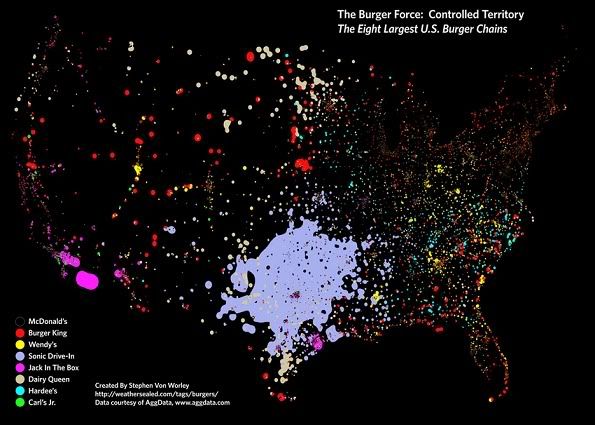
The survey of 155 countries describes respondents as "thriving," "struggling," or "suffering" according to the Cantril Self-Anchoring Striving Scale. The scale is very straightforward - it simply asks people to locate themselves on a scale of 0 to 10, where 0 is the worst possible life for themselves and 10 is the best. The three categories break out as follows:
Thriving -- wellbeing that is strong, consistent, and progressing. These respondents have positive views of their present life situation (7+) and have positive views of the next five years (8+). They report significantly fewer health problems, fewer sick days, less worry, stress, sadness, anger, and more happiness, enjoyment, interest, and respect.The patterns are familiar from other similar surveys: overall the Americas tend to be happiest (a median of 42% of respondents are thriving), followed by Europe (29%), Asia (17%), and Africa (8%).
Struggling -- wellbeing that is moderate or inconsistent. These respondents have moderate views of their present life situation OR moderate OR negative views of their future. They are either struggling in the present, or expect to struggle in the future. They report more daily stress and worry about money than the "thriving" respondents, and more than double the amount of sick days. They are more likely to smoke, and are less likely to eat healthy.
Suffering -- wellbeing that is at high risk. These respondents have poor ratings of their current life situation (4 and below) AND negative views of the next five years (4 and below). They are more likely to report lacking the basics of food and shelter, more likely to have physical pain, a lot of stress, worry, sadness, and anger. They have less access to health insurance and care, and more than double the disease burden, in comparison to "thriving" respondents.
The five most satisfied countries in the world are - say it with me now - the Scandinavian countries of Denmark (82% thriving), Finland (75%), Norway (69%), and Sweden (68%), plus the Netherlands (68%). The highest in the Western Hemisphere is Costa Rica (63%), followed by Canada (62%), Panama (62%), Brazil (58%), and the United States (57%). Asia is led by New Zealand (63%), Israel (62%), and Australia (62%). The least satisfied are mostly in Africa - Togo (1%), Burundi (2%), and Comoros (2%) are the least satisfied countries in the world. Meanwhile, the big Asian countries are surprisingly low on the scale: Japan comes in at just 19% thriving, India at 10%, and China at 9%.

